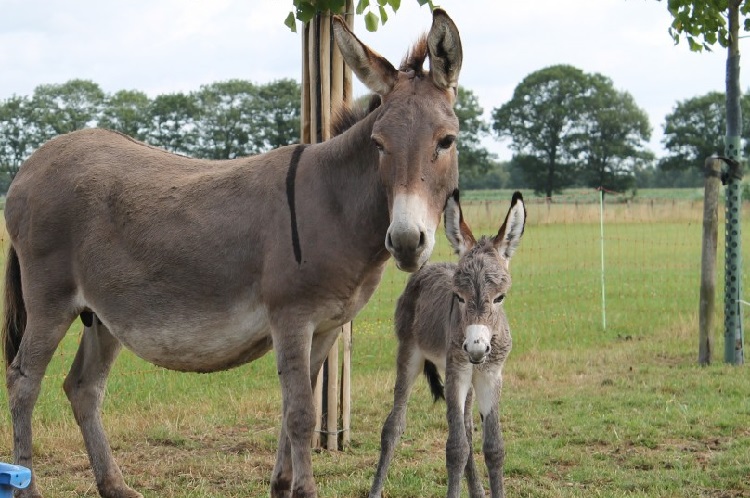Overview
The next time someone says, “you’re stubborn as a mule,” you should thank them! Mules are legendary for being hard-headed, but that’s only because they tend to have enough smarts to know when they shouldn’t do whatever you’re asking them to.
They’re truly amazing creatures; they are whip-smart, hardy, and incredibly sweet. Utilized all over the world for centuries as reliable pack animals, mules are worth getting to know.
What Is a Mule?
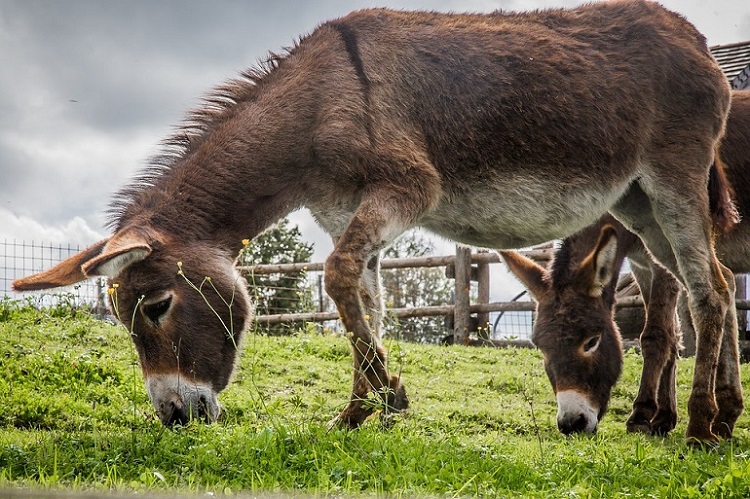
If someone started a joke by saying, “So a donkey, an ass, and a mule walk into a barn…” would you know the difference between the animals?
Most people confuse the three, so let’s clear that up. A donkey is basically just an ass that’s been domesticated, and a mule is the offspring of a male donkey and a female horse.
What Is a Hinny?
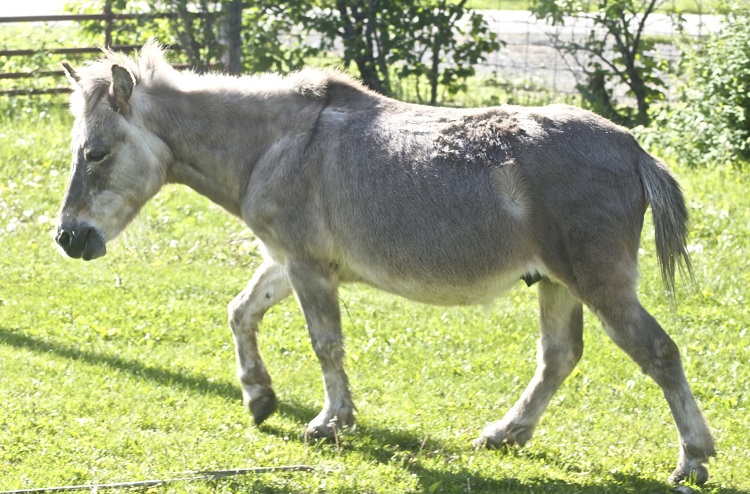
Hinnies are the offspring of a male horse and a female donkey. Thanks to the physiology of male horses and female donkeys not being that compatible, hinnies are much more rare than mules.
Terminology of Mules
Given below is some terminology related to mules.
Molly Mule
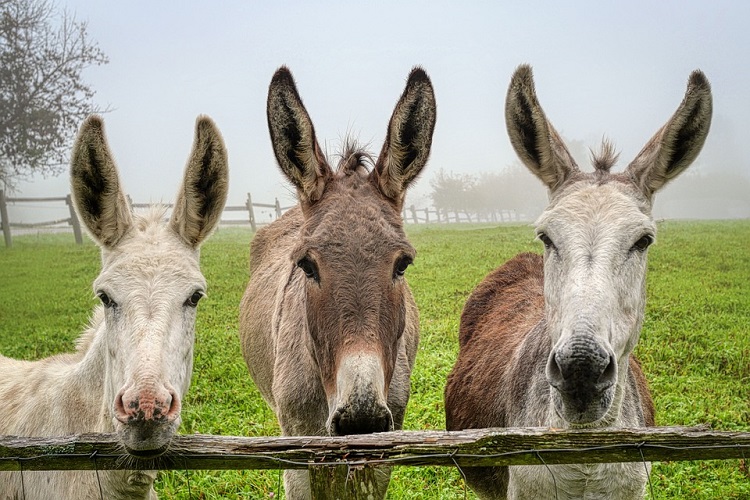
The term “molly mule” is used to describe a female mule that is technically able to reproduce because it experiences a period, or oestrus cycle if you wanna be fancy about it.
Horse Mule
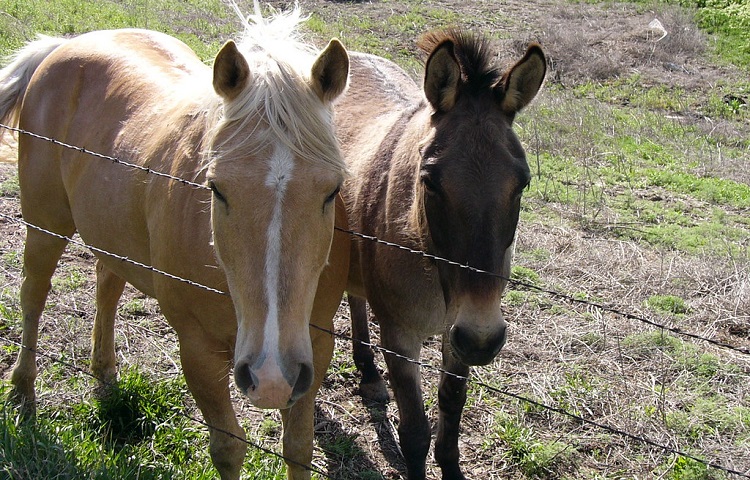
“Horse mule” is a fancy way of saying that the mule is a boy. Sometimes — because why be consistent? — a horse mule is also called “john mule,” but that is supposed to refer to a gelded mule (or a poor fella who no longer has the bits required to procreate.)
Mule Colt
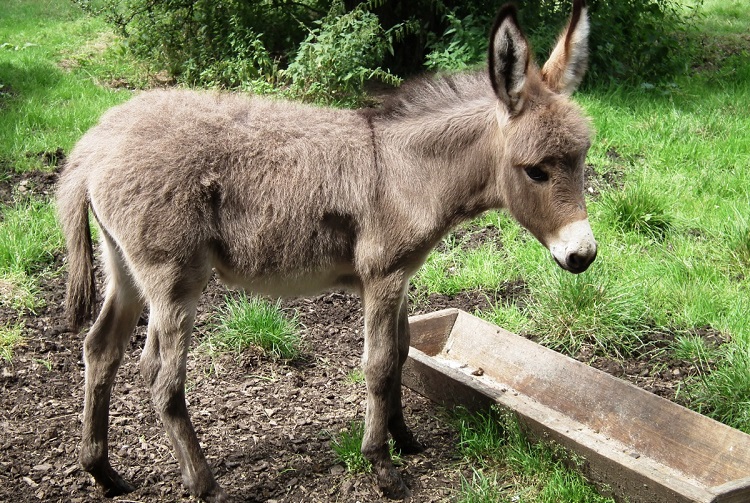
A “mule colt” is a young male mule.
Mule Filly
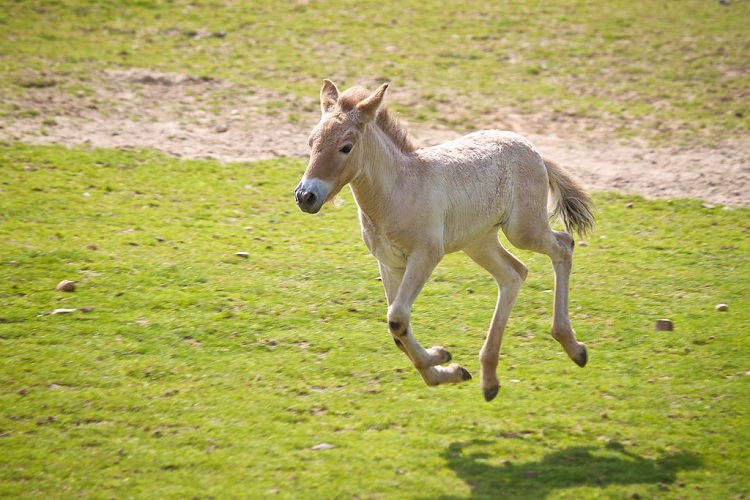
Similarly, a “mule filly” is a young female mule (no word yet on whether it’s named Molly.)
History of Mules
Mules go way, way back into ancient history, believe it or not. If a painting in an Egyptian tomb is to be trusted, mules were pulling chariots as far back as 1350 BC! They’ve been essential pack animals through countless wars and migrations, all the way up to the war in Afghanistan in the 1980s thru today.
George Washington notably bred mules on his Virginian estate, Mount Vernon, despite some considerable difficulties in obtaining the stock he desired; the Andalusian donkey originates in Spain (hence the name), and the Spanish government prohibited Washington from getting any.
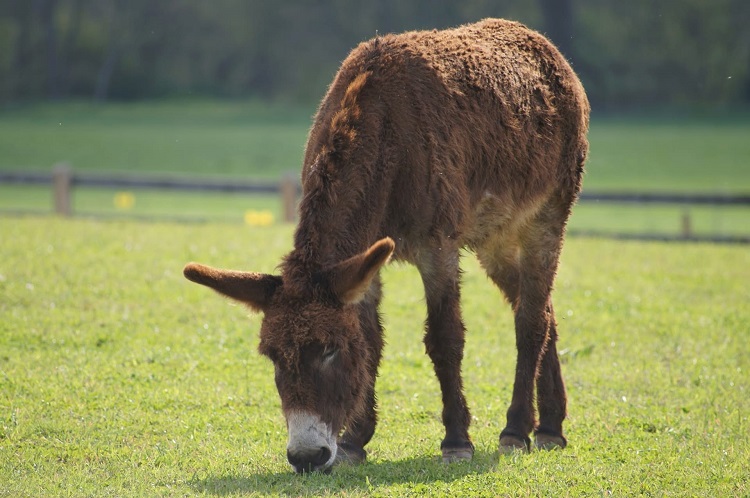
Once King Charles III of Spain finally caved in 1785, the jack that survived his journey across the Atlantic, who they named “Royal Gift,” ended up siring an “American donkey dynasty” of mules.
Mules were essential draught animals for years and years until the advent of engine-powered vehicles. Just like John Henry having to defend his place in the industrial revolution, mules struggled once their reliable ruggedness was replaced by gas and gears.
However, mules continue to be useful today, as they are capable of performing arduous tasks in conditions that render many machines ineffective. They can traverse dangerous mountainous trails and navigate over rocky terrain that would challenge any motorized vehicle.
They’re also really sweet and lovable, and we dare you to say that about anything with a motor.
What Makes a Mule Different From a Horse?
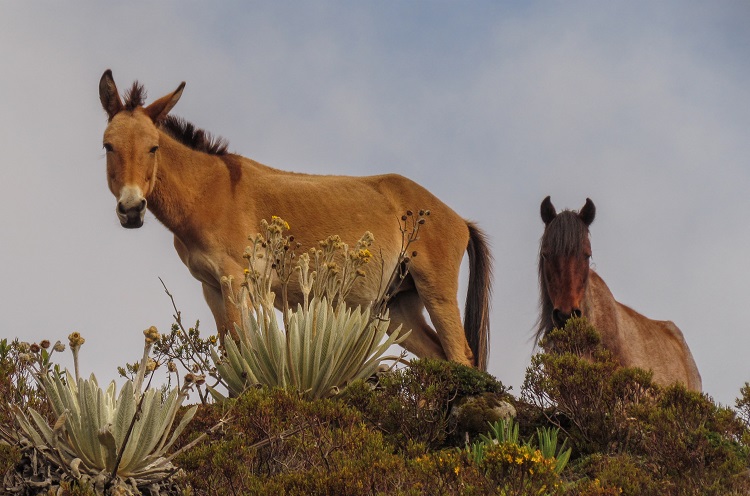
While the uneducated could mistake a mule for a horse at times, there are some reasonably clear distinctions between the two in terms of physical appearance. A mule usually has thin limbs, dainty little hooves, and a short mane like a donkey, but the height, shape, and coat characteristics of a horse.
We say “usually,” because you can’t always predict what a hybrid animal will end up looking like, although there are recognizable patterns. For example, hinnies typically end up with long donkey ears, but horse mules don’t.
Some of the mule’s other characteristics are what made them such desirable draught animals. For example, although there isn’t any reliable scientific evidence to support this, anecdotal evidence for years has claimed that mules are much more intelligent than either of their parent species.
They are also more durable, possess greater endurance, and are generally tougher. According to Spana — an international organization that strives to improve the welfare of working animals — mules require less food, live longer (up to 50 years, in some cases!), and have more stamina than horses that are the same size.
They also have harder hooves, which makes them better for working in rough terrain (it’s like the equivalent of horses wearing ballet slippers, while mules have hiking boots. They’re just less delicate and better prepared.)
In terms of personality, mules are reputed to be far more personable, if such an attribute can be given to animals. The reason they’ve gotten the reputation for stubbornness is their well-developed sense of self-preservation.
When scared horses have a “flight reflex,” which means that they instinctively run away. A donkey, on the other hand, has a “freeze reflex.” Mules tend to have a highly intelligent blend of the two, which results in the appearance of them having hard-headed tendencies.
What Do Mules Eat?
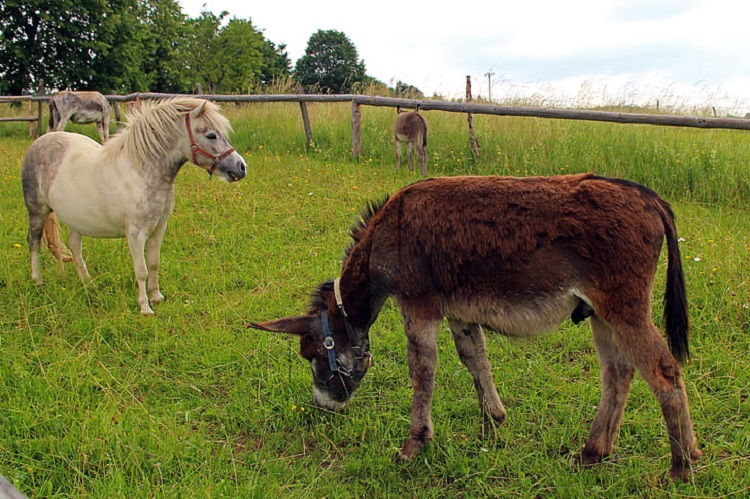
Mules do best on a diet similar to that of a donkey: mostly straw and limited hay or grazing fodder like grass, weeds, and wild shrubs. Like other equines, they enjoy the occasional treat of carrots or apples, but it’s better to keep those for special occasions.
It is also recommended that you feed them slightly less food than you would feed a horse of a similar size.
Physical Characteristics of a Mule
Just like any offspring, a mule inherits the appearance of both animal parents. They usually end up being brown or gray in color, but they have been known to come in a variety of colors common to horses and donkeys.
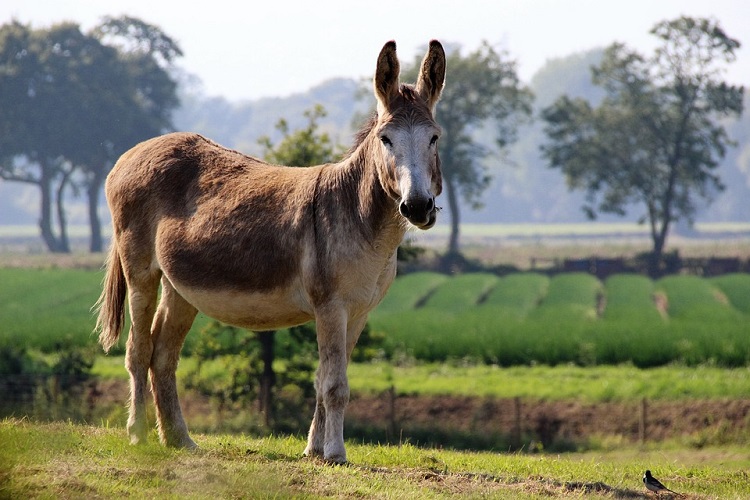
In terms of size, mules are larger and leaner than donkeys, and smaller but —ahem — stouter than horses. Their heads tend to be less noble-looking than a horse, with a shorter nose and longer ears (but not quite as long as a donkey’s).
They also have horse-like teeth, and their coats typically resemble that of their female parent (which, in case you’ve gotten confused, was a horse.)
In general, mules exhibit “hybrid vigor,” a term used to describe the result of removing weaker characteristics and enhancing the desired traits through crossbreeding.
Mental Characteristics of a Mule
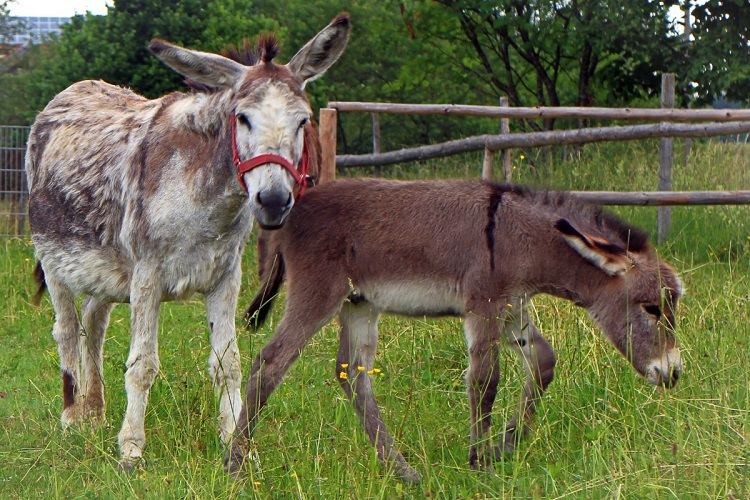
As we’ve mentioned already, mules inherited what seems like the best traits from their respective parents. That’s the whole point of crossbreeding, and mules represent one instance in which the result was well worth the effort.
They are often quite docile and eager-to-please, as long as they aren’t put into a situation that they think is too dangerous (hence the stubborn streak.) Because they are incredibly intelligent, they will offer some impressive resistance if you’re trying to make them do something they don’t like.
Common Sizes of Donkeys and Mules
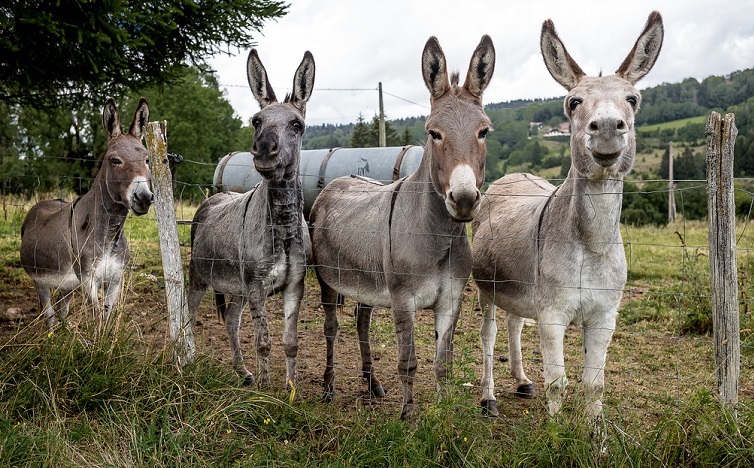
Just like any animal, the size of a donkey or a mule is highly dependent on its genetic line. Mules run the gamut from the adorable miniature mule — which can be as small as 50lb, the size of a male bulldog – to massive, with the largest recorded male mule weighing in at 2,200 lbs.
In general, mules are grouped into three size categories: miniature (50″ or less), Saddle mule (50″ or more), and Draft mules, which tend to be much sturdier and are produced by mating a male donkey with a draft horse breed.
Donkeys, on the other hand, have all kinds of size classifications. Miniature donkeys measure 36″ or less at the withers (the equine word for the highest part of the horse’s back, just above the shoulders.)
A small standard donkey is usually between 36″ – 40″, and a standard is between 40″ and 48″. Then you get into the big boy categories: Large standard donkeys are 48″-54″ for jennets, and jacks are 48”-56″. Finally, mammoth donkeys (which sounds like a terrible sci-fi concept film) are any donkey over 54″ (jennets) or 56″ (jacks).
Can a Mule Reproduce?
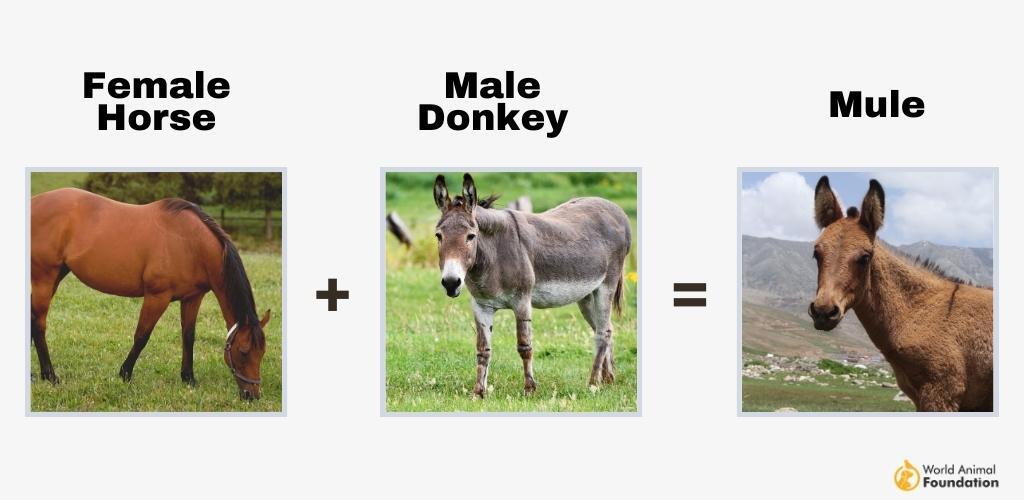
Mules are almost 100% sterile. Having horse and donkey parents means that mules have a chromosomal mismatch: they have 63 chromosomes, while horses have 64 and donkeys have 62. Although there have been cases of mules producing progeny, it is extremely rare.
Interesting Facts About Mules
Mules Sterility
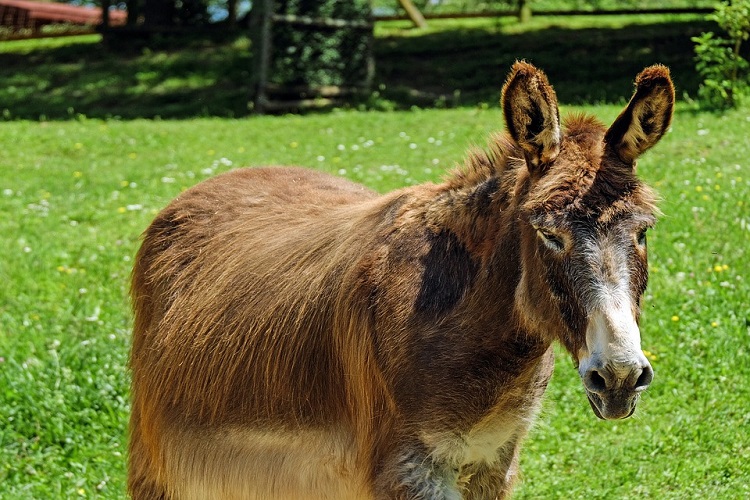
Let’s break this down, shall we? We’ve mentioned that mules are infertile because they have 63 chromosomes (32 horse chromosomes from mom, and 31 donkey chromosomes from dad). But why is that a problem?
Well, firstly, this means that their chromosomes don’t make a matched set; chromosome #1 from mom is very dissimilar to the chromosome #1 dad supplied. And the poor mule has a lonely unmatched chromosome as well.
So, to produce an egg or sperm, cells need to undergo meiosis, where the chromosomes match up in order to evenly divide. In mules, these pairings aren’t even at all, so meiosis is usually a total bust. Ergo: no reproductive cells are made. Usually.
How Much Weight Can a Mule Carry?
U.S. Army specifications for pack mules state that ‘American mules can carry up to 20% of their body weight for 15-20 miles per day in mountains.”
India passed the Prevention of Cruelty to Draught and Pack Animals Rules in 1965, which specifies that the maximum weight a mule should carry is about 440 pounds, but that doesn’t mean that they can do that consistently.
The Skin of Mules
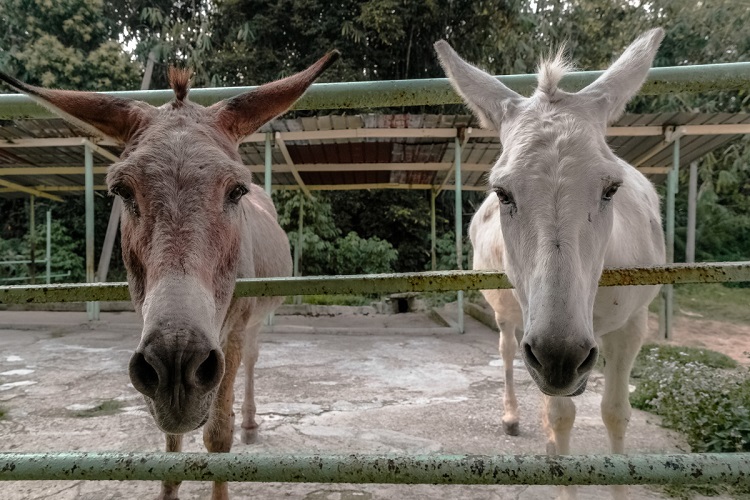
The skin of a mule is less sensitive than that of a horse, and it is more resilient against harsh elements. This makes them much better suited for working outdoors, as their skin will be less prone to sores or other issues that are common for workhorses.
Whimpering Noises
Usually, mules either bray like a donkey or whinny like a horse, but did you know that sometimes they will make whimpering noises when they’re worried or excited? How could you resist??
The Lifespan of Mules
The average lifespan of a mule is roughly 35 years old, but some have made it to the ripe old age of 50.
Are Mules Suitable for Rocky Terrain?
Mules are uniquely well-suited for rocky terrain thanks to their sure-footedness and the fact that they have harder hooves. (Harder hooves = less stones and debris can get lodged in there, and they’ll be less likely to sustain an injury on mountainous trails.)
Different Types of Hybrids in Equines
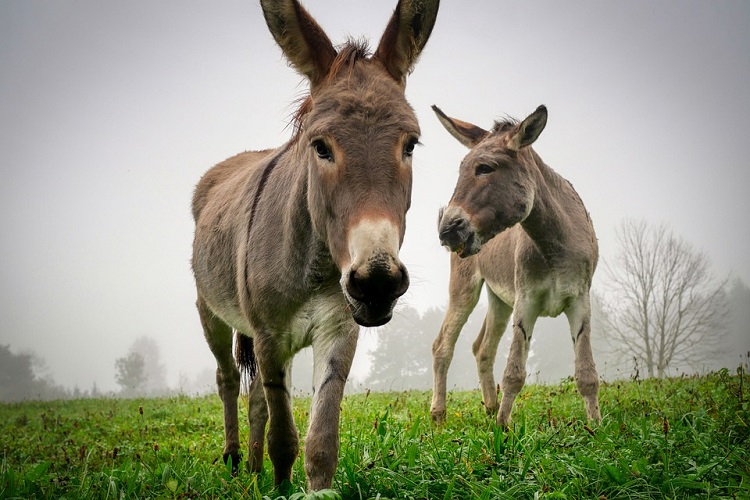
Equines are uniquely well-suited to interbreeding, apparently, as there are dozens of different types of hybrids. A mule, as we’ve said, is the result of a donkey father and horse mother.
A hinny has a horse father and donkey mother. There are donkules, which are made when a donkey stallion and a lady mule mate, and a huleis when a male horse mates with a female mule.
Then to get really wild (pun intended), there are a bunch of different zebra hybrids as well. When zebra stallions and female donkeys mate, they produce an animal that is referred to by many names: a zedonk, zebrass, zebronkey, zonkey, zebonkey, zebadonk, or zebryde. (Sounds like bad slang, doesn’t it?)
A zorse, otherwise known as a golden zebra, zebra mule, or zebrule is the result of a zebra dad getting with a horse mom. Zonies are the offspring of a zebra father and a pony mother.
A zetland has a zebra father and a Shetland pony mother. Finally, when a horse father and a zebra mother mate, they create what are called hebras, horbras, or zebrinnies.
Is Training a Mule Different From Training a Horse?
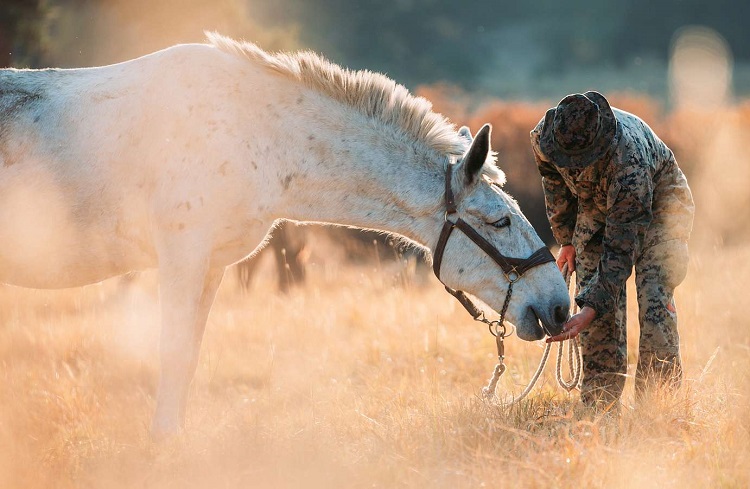
If you asked any equine trainer, they would tell you that each individual animal requires their own individual methods to be most effectively trained. That said, in general, some mellow mules could be trained in a manner similar to horses, but it’s not advised.
Most mules require training that takes their intelligence and sensitivity into account. Because they are difficult to coax into doing anything that they don’t want to, training mules require the process to be broken down into sequential and doable steps, with a great deal of patience.
Usage of Mules
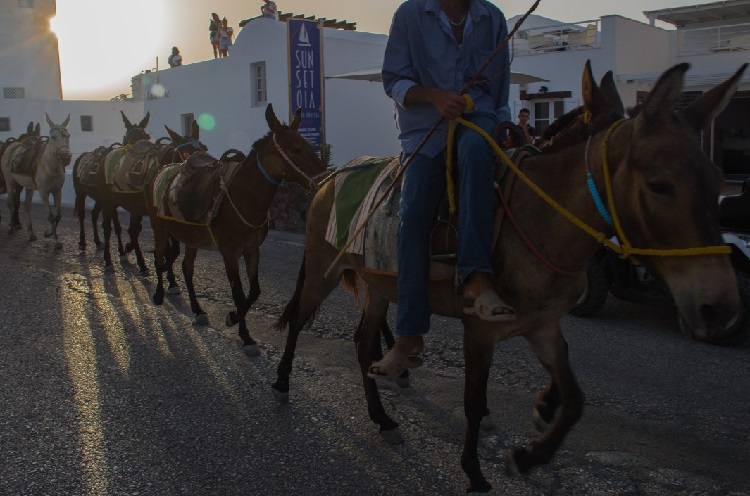
Mules have been prized for their durability and reliability in farming methods and military contingents for centuries. In combat, they can traverse conditions that would prohibit normal motored vehicles.
For example, the U.S. military used more than 10,000 mules to carry weapons and supplies during the war in Afghanistan in the 1980’s. People have used mule trains to ford rivers and transport supplies during times of migration, as mail delivery animals, to pull canal boats, and even as mobile platforms for small cannons.
What Are the Predators of Mules?
Because mules are mostly domesticated, they are usually protected by their owners from regular predation. However, they’ve been known to fall prey to lions, wolves, and even foxes.
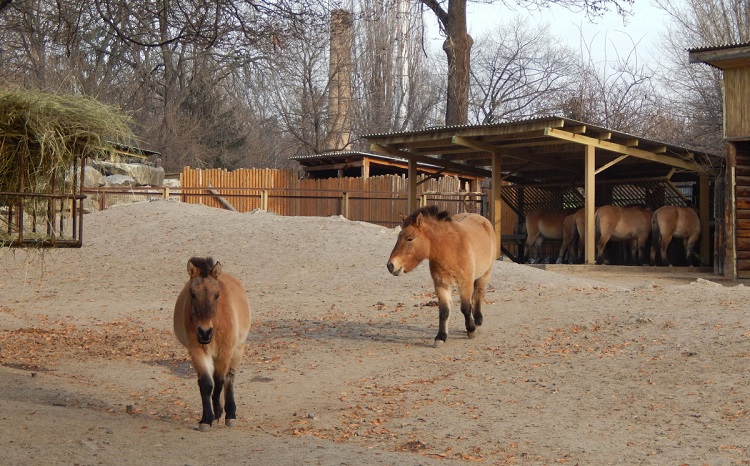
What Are the Threats to Mules?
Mules are not considered threatened animals (in terms of risk of endangerment), but they are at risk of several dangerous diseases. Tetanus, Eastern equine encephalomyelitis, and equine influenza are all considered threats to mules but are largely preventable through regular veterinary care and vaccinations.
FAQ’s
Are Mules and Donkeys Good Animals for Therapy?
Mules make good therapy animals because of their gentle natures and sturdy physical make-up. (They are better in hippotherapy, for example, because they can support patients who weigh more without having to compensate by being taller, so the patient doesn’t have to feel so high up.)
Should Mules or Donkeys Be Sent to Trainers?
The mule advocacy group Lucky Three Ranch doesn’t recommend sending mules to trainers, because they will usually use abbreviated training methods. If you try to rush a mule or a donkey into training that makes them uncomfortable, they will freeze up, and behavioral issues could result.
Where Are Donkeys and Mules Registered?
You can register a mule with several different registries. The largest is the American donkey and Mule Society. Other registries include the American Mule Association, and Standard Jack and Jennet Registry.
Which Country Breeds the Largest Number of Mules?
China breeds the largest number of mules in the world, over seven million each year.
Can Mules Get Angry?
Even though mules are known to be pretty placid, they can kick backward and even sideways when agitated.
Which Organization Is Functional in Providing Treatments to Mules?
There are several groups committed to providing treatment for mules around the world: Spana, Lost Meadows Mule Refuge, the Donkey & Mule Association of the Western Reserve, and Lucky Three Ranch, to name just a few.
Conclusion
Mules are incredible creatures, as sweet and friendly as they are sturdy and useful. They have played an essential part in the history of many nations and provided crucial assistance in times when nothing else would work.
Mules deserve much more respect than they typically get, and if you ever get a chance, you should totally give one a cuddle!


